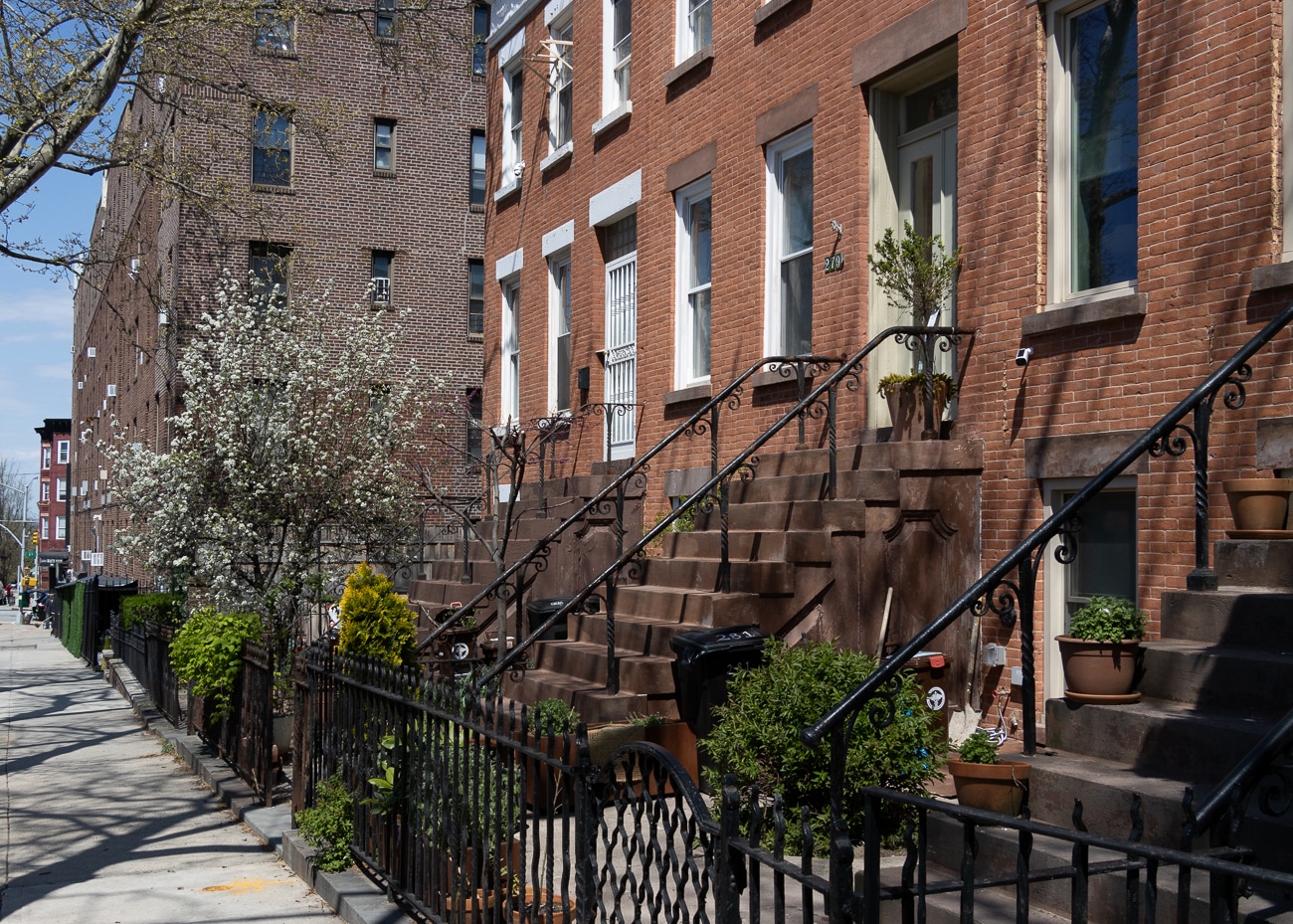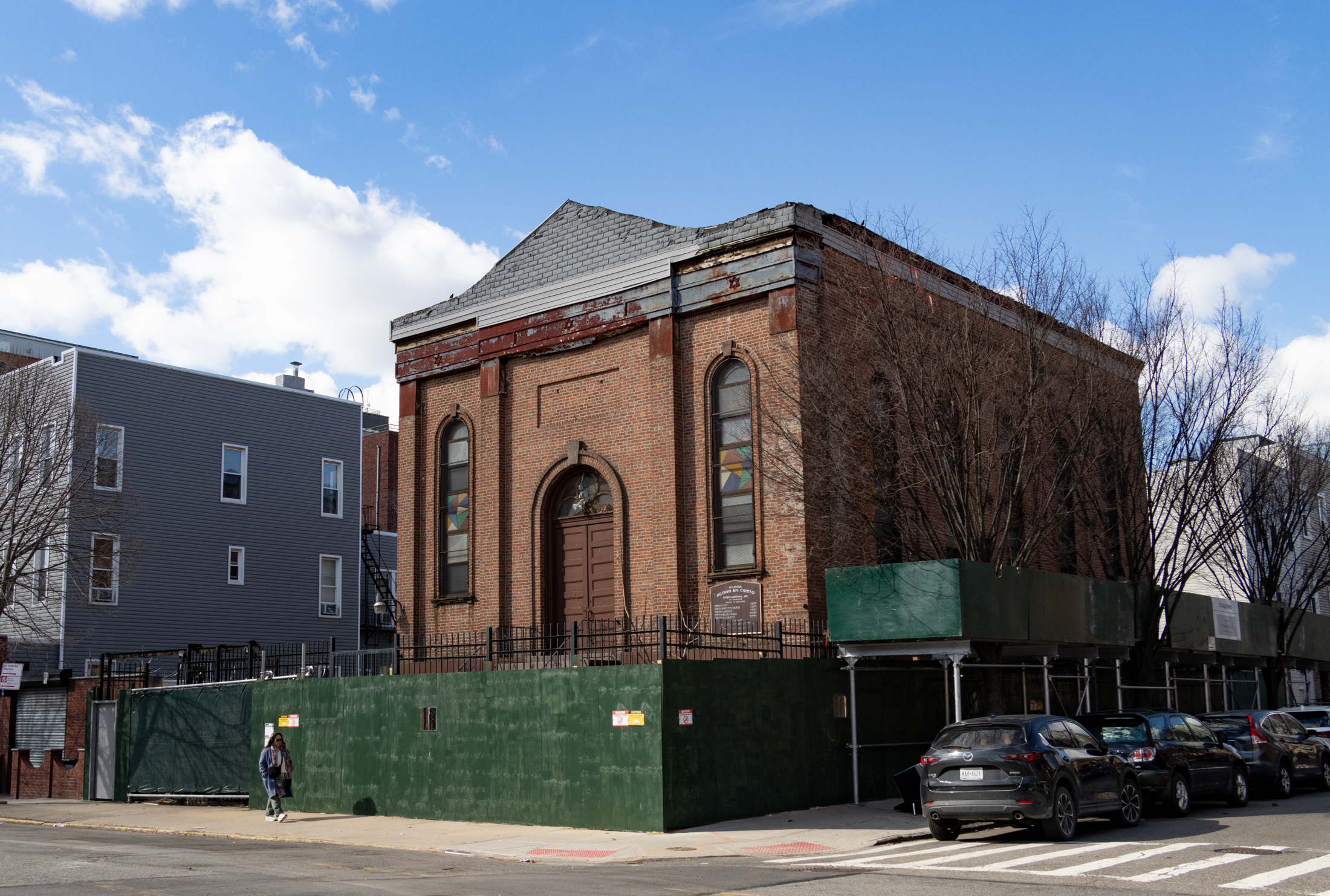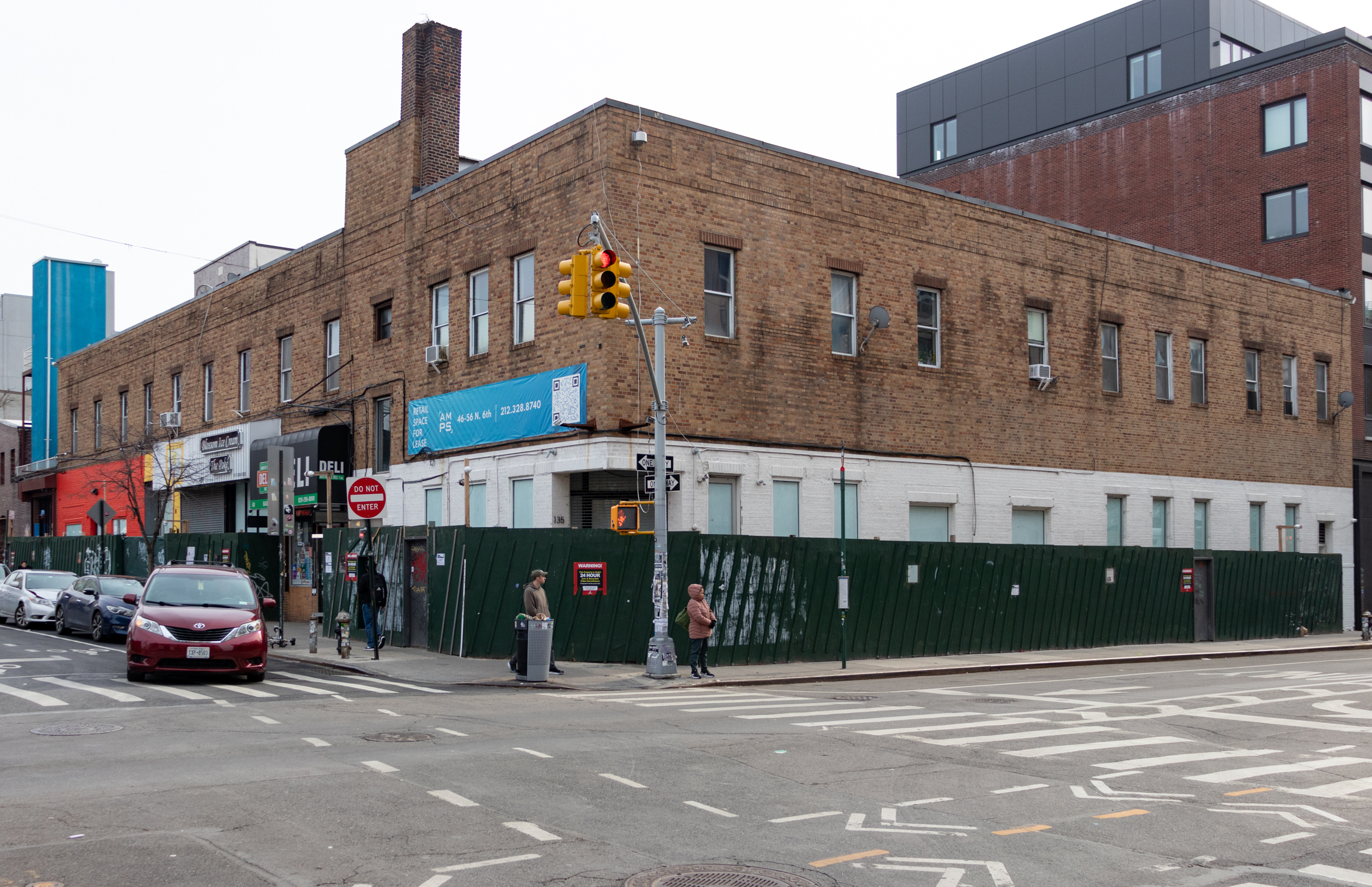Building of the Day: 182 Graham Avenue
Brooklyn, one building at a time. Name: Louis B. Schuler Building Address: 182 Graham Avenue Cross Streets: Corner of Meserole Street Neighborhood: Williamsburg Year Built: 1881 Architectural Style: Neo-Grec Architect: Unknown (wouldn’t be surprised if it was T. Engelhardt. It looks like his work) Landmarked: No The story: This impressive building was built for wholesale…

Brooklyn, one building at a time.
Name: Louis B. Schuler Building
Address: 182 Graham Avenue
Cross Streets: Corner of Meserole Street
Neighborhood: Williamsburg
Year Built: 1881
Architectural Style: Neo-Grec
Architect: Unknown (wouldn’t be surprised if it was T. Engelhardt. It looks like his work)
Landmarked: No
The story: This impressive building was built for wholesale liquor dealer Louis B. Schuler. It’s a huge 25×62.5 foot building, with three stories of residential space on top of a retail space. Sadly, the retail floor has been radically altered for the worse, but looking up can still give you a sense of the former grandeur of the building. And no wonder, as it was the headquarters for one of the Eastern Districts’ many successful merchants.
Louis B. Schuler was born in Badensia, Germany, and came to America in 1862. He began working for brewer Otto Huber, who had a very successful brewery across the street on Meserole. He soon became not only an employee, but a relative, becoming Huber’s brother-in-law, and executor of the Huber estate. By 1870, he was a wine importer, and in 1881 had this building built for his business and home.
As can be expected, liquor did quite well, and Schuler was soon a leading citizen in the German-American community. He was a trustee in the German Savings Bank, and President of the Eastern District Dealer’s Association. He was also a charter member and president of the Deutscher Liederkranz, a German singing society. He often used his store to host political meetings, but he was not especially active in politics.
The Louis B. Schuler Company sold both wholesale and retail sales from 182 Graham, and may also have had a bar or tavern of some sort. In 1888, he was sued by a former worker named Charles Fuchs, who was listed in the Brooklyn Eagle as a “bartender”. Fuchs was suing for slander, because he said Schuler had called him a liar and a thief in German, in front of customers. Schuler had accused Fuchs of stealing Schuler’s formula book for mixing spirits, while Fuchs testified that the books were his. The outcome of the case is unknown, on line, anyway. The recipes for brandy, cognac and other liquors were quite interesting, and most included a healthy dollop of prune juice.
In 1884, a group of Williamsburg businessmen had decided a bank was needed on Graham Avenue, there in the 16th Ward, and Schuler was among the men planning how to establish one. They planned to put the bank in this space, but it was shelved at the time when they couldn’t get a capable cashier. After Schuler’s death, in 1898, it appears that the City Trust Bank occupied the space for many years, and more recently, a storefront church. The ground floor is now home to a bodega supermarket.
It’s not known how much space the businesses took up, or if the family took the entire upper three floors for themselves. It’s quite possible. Today, there are 6 units in the building, two per floor. The building is in dire need of work, but still has a faded glory, along with some impressive detail. GMAP













man, would i like to turn that back into my own personal home. looks quite salvageable, i wonder what the original layout looked like inside
This neglected and disfigured building is not a great testament to the quality of life in Brooklyn.